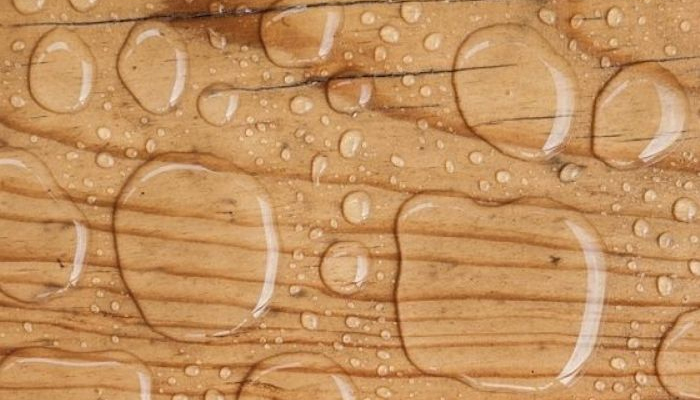Plywood is a good, readily available building material that has many interior and exterior applications. However, unlike plastic, it is not waterproof. To protect plywood from water damage, there are many types of waterproofing available. Most are easy DIY projects that will save you time and money. Let’s learn with A1 Plywood about how to waterproof plywood!
1. What Happens when Plywood is Exposed to Moisture?
Plywood is made up of laminated softwood layers, held together by a strong adhesive. When exposed to moisture, layers of wood can swell or deform. As for the glue bond, it weakens when the wood is wet for a long time, and the layers can eventually separate. Besides delamination, plywood exposed to moisture also develops mold.
There are several steps you can take to prevent the plywood from being exposed to moisture to prevent damage:
- During construction, make sure you cover your plywood and keep it high above the ground.
- Before installation, use a paintbrush to coat with a weatherproof paint or waterproof preservative.
- For protection and a more aesthetically pleasing look, apply a coat of latex-based outdoor paint to your plywood.
- Apply varnish to plywood edges to seal and protect from water seepage.
2. What Can I Use to Waterproof Plywood?
There are a variety of waterproofing options available to protect plywood. However, in most repair shops, the most commonly sold type is spray or paint waterproofing. These are usually liquid rubber agents that are applied to the plywood surface while it is still wet. They then form a protective layer of plastic as they dry. Other types of waterproofing include:
- Waterproof paint on or spray-on
- Penetrating oil
- Sealant
- Plastic sheet and waterproof membrane
The application of most liquid waterproofing agents can be done by brush, roller, or sprayer. Regular plastic sheeting will need to be stapled or glued, and so will overlap and interlocking films.
3. How to Prevent Plywood from Water?
The best way to glue plywood outdoors is to apply a layer of epoxy glue on the surface of the plywood to protect the wood and prevent water from seeping in. You can easily purchase epoxy glue for plywood from your local store. For this you will need:
- A good water sealant
- External polyurethane varnish
- Small stain brush
- Pigment stains (water-based)
- Garden sprayer
- External waterproofing
4. Steps to Prevent Plywood from Water
- Step 1: Use a stain brush to apply a few coats of exterior polyurethane polish to the edges of the plywood to seal them. However, keep the glossy finish away from the plywood surface by covering it with masking tape.
- Step 2: Then, use a garden sprayer to coat the plywood surface with an outer layer of water-based pigment to color and protect it from UV rays. Let the plywood dry for 24 hours.
- Step 3: After it has dried, use a garden sprayer to inject a layer of water glue onto the plywood surface. Apply multiple coats of sealant and reapply every two years. It is worth noting that the epoxy coating will not stick to oil stains or oil-based paints.
5. Paint Plywood with PVA
- PVA (polyvinyl alcohol, polyvinyl acetate) is a water-soluble synthetic polymer. It is effective in film-forming, emulsifying, and as a binder. It can also be effective to seal your plywood to give it a waterproof quality. However, it is not the best product to use if your plywood surface is outside and is likely to be washed with rain water frequently.
- For this process, you may need to apply at least 3 coats of undiluted PVA, making sure each coat is completely dry before applying the next.
- Waterproof plywood can help prolong its life and keep it in good condition. There are different ways to do it, but first, you need to determine if it is for indoor or outdoor applications. It is also important that you follow the recommendations of the finished product manufacturer when installing a protective layer on your plywood.
6. A1 Plywood – Vietnam’s Leading Plywood Factory
A1 Plywood is committed to the prestige and quality of products, ensuring that Plywood panels are always delivered to customers according to requirements and designs.
We own a direct furniture factory in Vietnam, with a team of skilled carpenters, each product is made carefully from the stage of choosing boards to construction and installation.
The factory accepts orders to produce Plywood boards based on the correct sizes and measurements as required, and delivery on time.
Through the above article, I hope you can understand how to waterproof plywood to protect the plywood.
Related keywords: how to waterproof plywood for boat, how to waterproof plywood subfloor, how to waterproof plywood floor, how to waterproof plywood roof, how to waterproof plywood walls, how to waterproof plywood sheets, how to waterproof a plywood roof.
